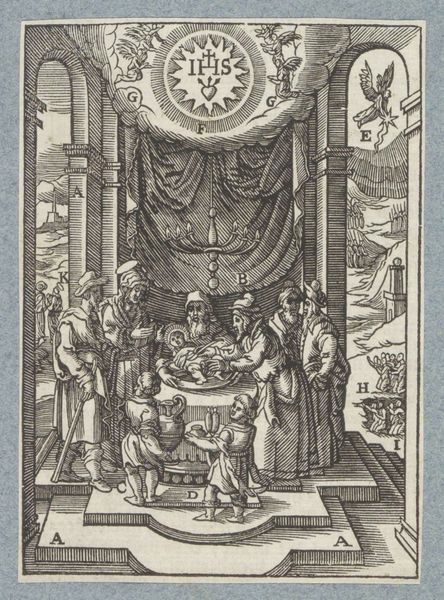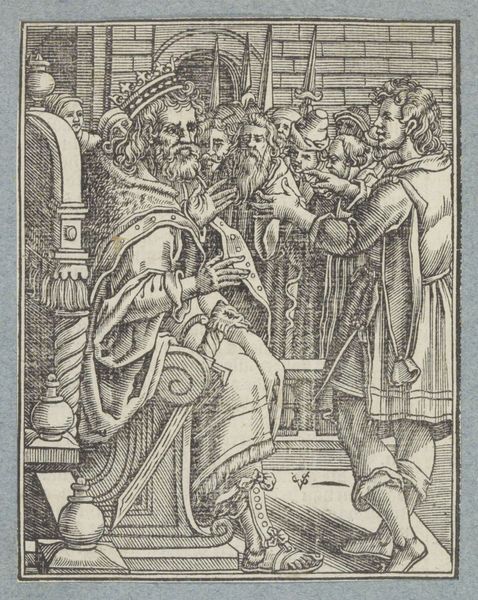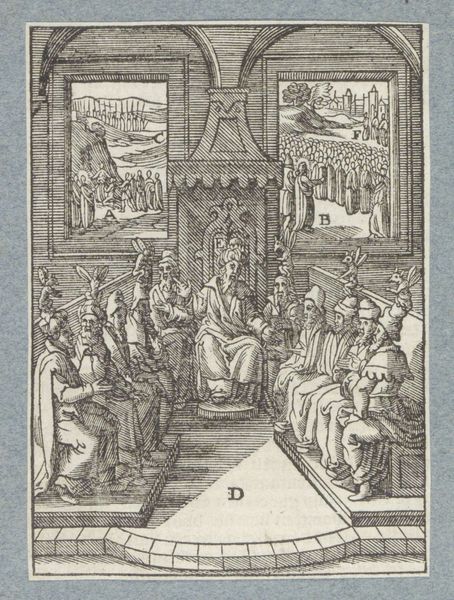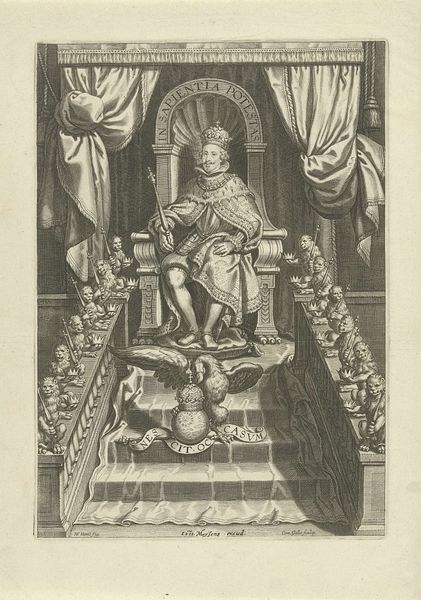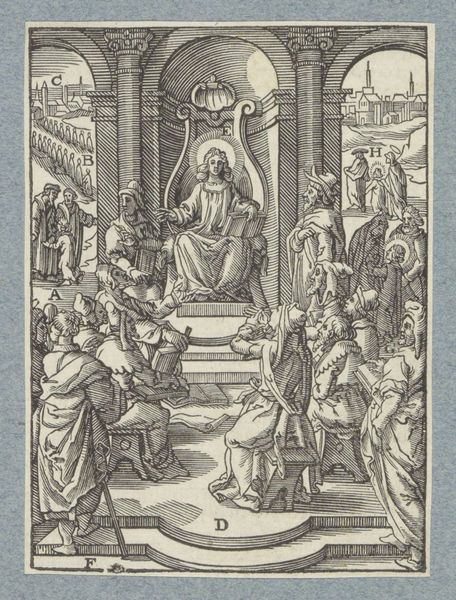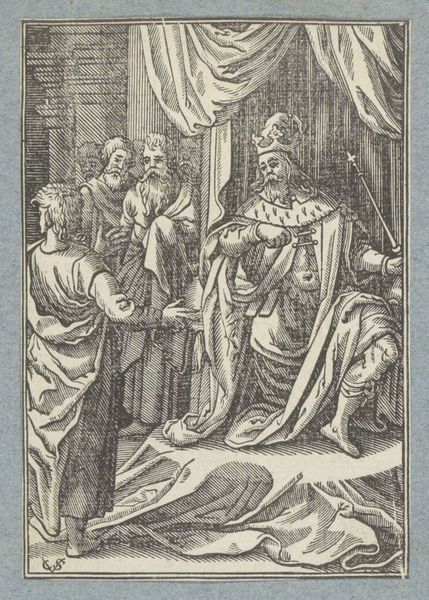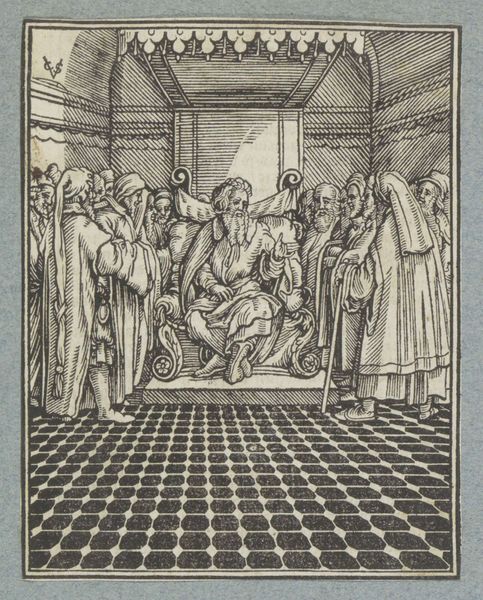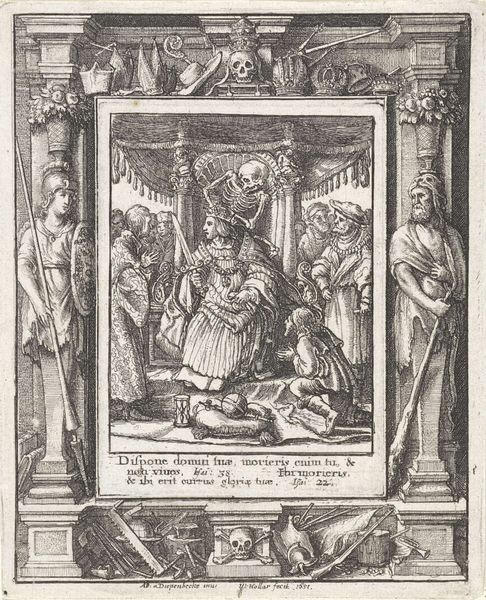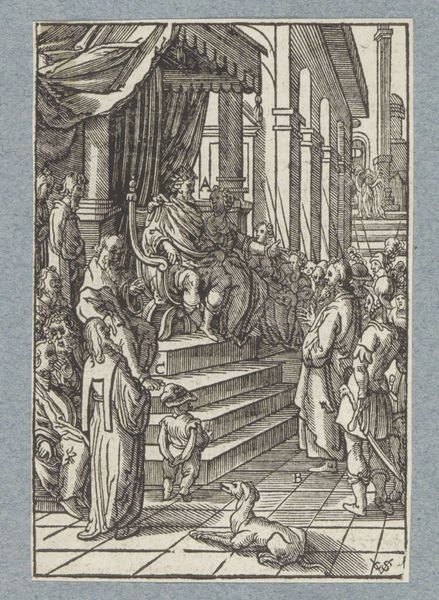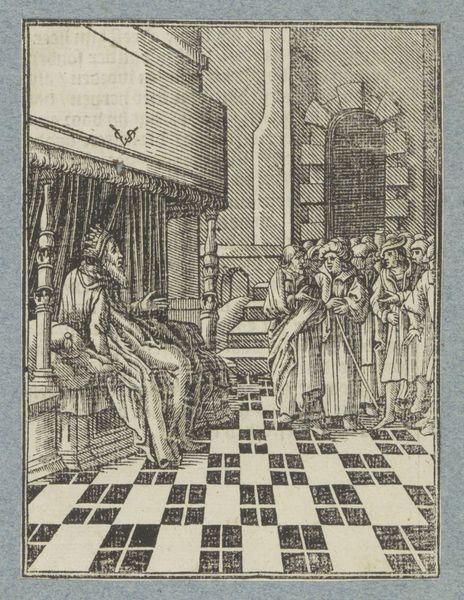
print, engraving
#
medieval
#
narrative-art
# print
#
figuration
#
engraving
Dimensions: height 106 mm, width 83 mm
Copyright: Rijks Museum: Open Domain
Editor: So, here we have "Salomo's troon," or "Solomon's Throne," an engraving by Christoffel van Sichem II, created around 1645. The high-contrast black and white gives it such a dramatic, almost theatrical feel. What do you see in this piece? Curator: I see a fascinating interplay between power and representation, typical of the period. Look at how Solomon is positioned, elevated on his throne, surrounded by lions – symbols of strength and kingship. But consider, too, who commissioned and consumed images like these. Editor: Right, so who would have been the audience? Curator: Likely, an elite, literate audience familiar with biblical narratives. Prints like these circulated widely, reinforcing religious and social hierarchies. The lions aren't just decorative; they're visual cues signalling Solomon's divinely ordained authority. They were often seen as an extension of the King’s power. Editor: And the servant figure at the bottom, carrying what looks like a vessel? Is that playing into that power dynamic? Curator: Precisely. Notice the detailed patterning of the floor drawing the eye up toward the king. Think about the visual language of submission and the affirmation of royal power. Where is this artwork positioned within larger debates on race, gender, class, or disability and how might we use our intersectional lens to broaden interpretations? Editor: I hadn't considered the composition as reinforcing those hierarchies so explicitly. Curator: It’s crucial to unpack the layers of meaning embedded in these seemingly straightforward depictions of biblical scenes. Editor: It really puts the work in a different light, considering who this print was made for and what power dynamics it reinforces. I'll definitely be thinking about this more when I look at other art from this period.
Comments
No comments
Be the first to comment and join the conversation on the ultimate creative platform.

